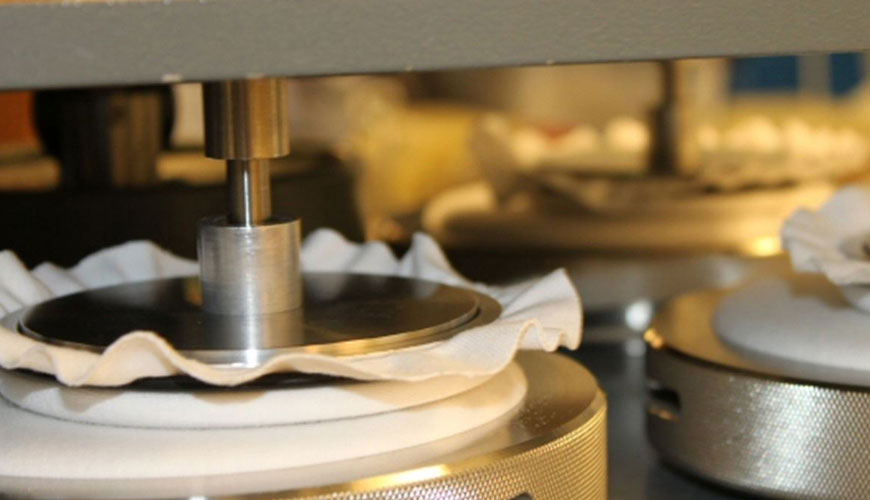

EUROLAB, with its state-of-the-art accredited laboratories and expert team, provides precise and fast testing services within the scope of DIN 53863-1 test. Abrasion plays an important role in the various stresses that affect textiles during use and cause them to gradually become unusable (abrasion3). Abrasion testing performed under defined conditions can give an indication of the possible behavior of a textile fabric when exposed to abrasion during use and, in conjunction with testing other properties, enables an assessment of its suitability for use in specific areas.

Abrasion is the movement of a textile fabric relative to an abrasive substance (as the base body) or a friction or abrasive body (as the counterbody) of the friction-related abrasion test.
Etching is an etching process with a certain etching time, without visible destruction (hole formation) in the textile fabric. Abrasion is a cleaning process that causes visible partial destruction of the textile fabric.
Abrasive wear in textile flat structures is the name given to the change in surface and structure caused by abrasion. The surface is primarily altered by the formation or separation of broken fiber rods or fibres, by reciprocal changes in the position of the fibers or filaments, and by the collection of fiber ends and broken fragments into small balls (tubers, neps, fibres). The structure of the cage is altered by deeper changes in the position of the fibers or yarns, such as slipping between the warp and the shoe during the washing process.
Abrasion is the weight loss of the wear test resulting from wear. Fiber dust is the term used to describe mostly very small pieces of broken fiber produced during washing, as well as foreign matter particles that are applied to the fiber and then dried by finishing or polishing or wrinkle resistant equipment.
Numerous types of equipment have been developed to test textile fabrics using different methods. In principle, a rub tester should create a scouring that corresponds as closely as possible to practical stresses between the base body (sample) on the one hand and the counter body (cleaning agent, cleaning element) on the other.
EUROLAB assists manufacturers with DIN 53863-1 test compliance. Our test experts, with their professional working mission and principles, provide you, our manufacturers and suppliers, the best service and controlled testing process in our laboratories. Thanks to these services, businesses receive more effective, high-performance and quality testing services and provide safe, fast and uninterrupted service to their customers.
To get an appointment, to get more detailed information or to request an evaluation, you can ask us to fill in our form and reach you.